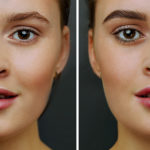
Facial feminization surgery (FFS) is well recognized collection of hard and soft tissue reshaping procedures. While most commonly seen as a transgender procedure, it is also done for non-transgender females who have more masculine facial features. While it is unknown how many such FFS procedures are performed around the world, it is very clear that the numbers are increasing. This is sure to continue to increase as the internet makes awareness and access easier, more surgeons are performing the procedures and medical insurances are beginning to offer some coverage for them.
While various facial feminization surgery procedures exist, there are few studies that have been done that have assessed their outcomes. How successful is the change in the facial appearance, are patients satisfied and what is the rate of complications from this type of facial reshaping surgery.
In the June 2016 issue of the journal Plastic and Reconstructive Surgery, a paper appeared in print entitled ‘Facial Feminization: Systematic Review of the Literature’. In this paper the authors performed a literature search and identified fifteen articles that were either case reports and clinical series. Of the over 1120 patients that were reviewed in these articles, seven (7) complications were reported. These complications were fluid collections in PMMA forehead augmentations (3), excessive mobility from bony nonunion from forehead contouring with brow bone reduction (3) and one rhinoplasty complication. Patient satisfaction was high although such determinations were not done using any method of quantified assessment.
Facial feminization surgery consists of a collection of procedures of which the brow and forehead are the most recognized. It is well acknowledged that the upper third of the face is the most important in making for a female appearance. Alloplastic forehead augmentation, frontal bone narrowing, brow bone contouring using either burring or an osteoplastic bone flap setback method, and hairline lowering and browlifting create the potential for a major gender appearance change. While all of these procedures are effective at achieving these feminization goals, there are not without potential complications. Bony irregularities, visible scarring, supraorbital nerve injuries and infection from alloplastic materials are all possible.
The eyes play a critical role in determining sex and the female orbit. The shape of the orbital rims in females are higher, less rounded and appear larger creating a softer eye appearance. A wider palpebral fissure also leads to a more feminine appearance. This leads to the role of superior orbital contouring and lateral canthoplasties to affect these changes. Removal of upper eyelid skin can also be done to feminize the upper eyelid area.
Female faces are heart-shaped with prominent well defined cheeks. One element of the female cheek area is that the zygomas are wider than in men. Whether this is best done with a widening zygomatic osteotomy with interpositional graft, cheek implants or fat injections can be debated. But increasing the width of the zygomatic arch creates a rounder more female face. In my hands this is best done with silicone zygomatic arch implant that can go the whole back to just in front of the ear.
Feminizing the nose through an open rhinoplasty has several well known reshaping goals. A slight concavity to the dorsal profile with a supratip break, an increased and more open nasolabial angle and a thinner nose from the nasal bones down to the tip cartilages are all features that are more consistent with a female nose.
Lip augmentation for increased vermilion on both upper and lower lips with a more full cupid’s bow region are classic and desired female lip shapes. For many transgender patients this really require lip advancements and lip lifts to permanently increase the amount of vermilion show. Fat grafts or lip implants can be added for even more volume.
A smaller and more v-shaped jawline is an essential lower face contouring change for many FFS patients. Jaw angle reduction by burring and chin rehaping by a T-pattern ostectomy is an effective strategy for a softer jawline.
While the influence of the voice that emanates from the voicebox is more important in sexual recognition, a protruding laryngeal prominence is a male neck characteristic. Flattening the profile of the laryngeal prominence by direct excision (tracheal shave) can help flatten the neck profile in many transgender patients.
Facial feminization surgery can include a comprehensive facial reshaping from the top of the skull down to the neck. Whether one does a few or all of these FFS procedures depends on a variety of factors of which the cost of the surgery is a major consideration. But most FFS procedures are associated with few significant complications and appears to offer satisfactory facial appearance changes.
Dr. Barry Eppley
Indianapolis, Indiana


